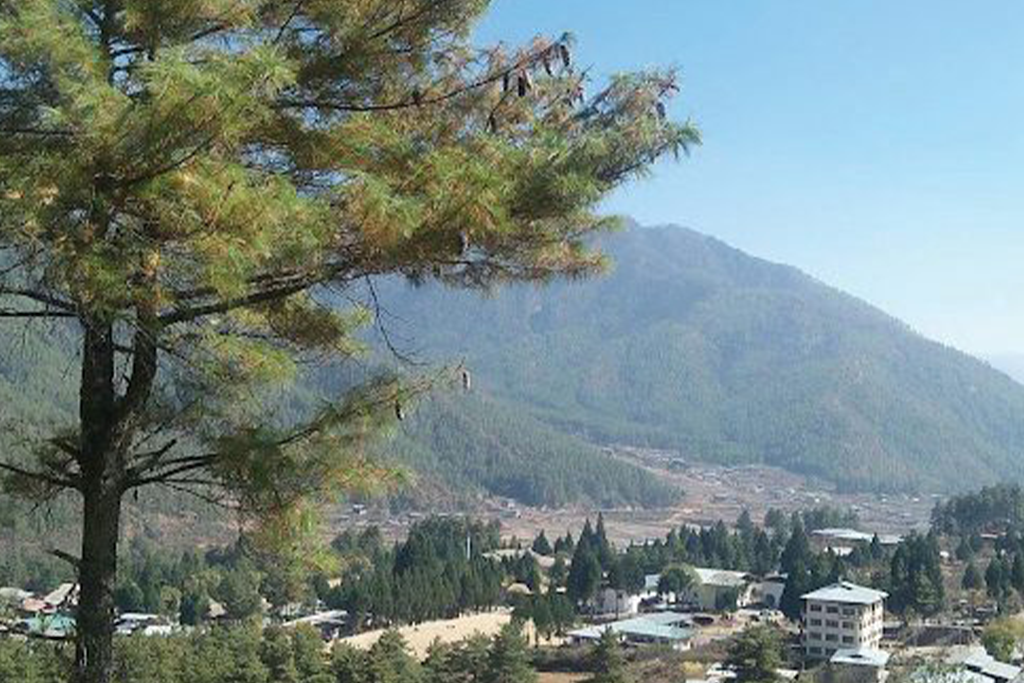
The Bhutanese | Monica Rai | September 21, 2024
The 33 MW Parochu Integrated Multipurpose Hydropower Plant (IMHP), located in Tsento Gewog, Paro, is progressing steadily and has raised hopes, not only for increased energy generation but also for providing solutions to water shortages in the region.
IMHP is positioned to address multifaceted needs, blending hydropower development with water supply benefits for downstream communities.
An official from the Department of Energy (DoE) under the Ministry of Energy and Natural Resources (MoENR), said the Tsento Hydro Project, whose weir is situated in Shana village, one kilometer upstream from the road’s end, and whose powerhouse will be near Dangkhapha village, has entered the advanced stage of its feasibility study that started in July 2023. DoE is leading this crucial phase, and is expected to conclude by June 2025.
The study will guide the project’s construction and structuring under Phase-III of Bhutan’s Small Hydropower Projects initiative. With the completion of the study, a clear construction timeline and project details will be outlined, paving the way for the next stages of development, including securing financing and structuring the project for construction.
DoE said that, as of now, no significant delays or challenges have been reported in the project’s progress. The feasibility study is advancing as per the work plan, and DoE remains on track to complete the necessary preparations within this fiscal year.
Officials from DoE said, “The preparation of FSR is funded by the Royal Government of Bhutan, the approved budget for FS is around Nu 14 million. However, for the construction of the project, we will need to work on financing and project structuring after the feasibility study is completed.”
The Parochu IMHP is being designed with the dual purpose of generating electricity and providing downstream communities with access to drinking water and irrigation. However, consultations with local communities and Paro Dzongkhag officials have revealed that water supply and irrigation are not currently pressing issues, as other water projects are already in progress.
The official said, “That said, the Tsento Hydro Project will include the necessary infrastructure for water supply and irrigation in its design, ensuring these provisions can be utilized in the future if needed.”
Chencho Gyeltshen, the Gup of Tsento Gewog, acknowledged that while the area does not face severe water shortages, there are times when water availability for irrigation fluctuates, with sufficient supply at times and shortages at others. The Tsento Hydro Project aims to address these inconsistencies and improve irrigation reliability.
He noted that the issue began about four years ago when the water sources started to dry up. According to the Gup, the community is both hopeful and cautiously optimistic, as they await to see whether the project will meet the expectations and promises made regarding water and irrigation improvements.
According to DoE, though a detailed water distribution plan is outside the current scope of the feasibility study, the project incorporates a provision to maintain water availability for essential uses, such as drinking and irrigation. The ability to regulate water flow through the weir will enable the hydro project to sustain both power generation and water supply for the downstream villages. By maintaining a steady release of water, the project aims to ensure reliable access for local communities, even during dry seasons or droughts.
While electricity generation is the primary focus of the Parochu IMHP, water availability for local communities remains a significant consideration. The project’s design allows for future use of its water supply and irrigation components, creating a balanced approach to meeting both energy and water needs in the Paro valley. The long-term aim is to build resilient energy and water infrastructure that can adapt to the changing needs of the region.
In order to ensure the sustainability of both energy generation and water supply, the project is undergoing a comprehensive environmental and social impact assessment. This assessment will form the foundation of a robust environmental management plan, which will be implemented alongside the project’s construction.
